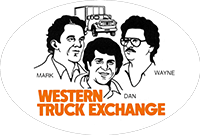Most Effective Ways to Reduce Truck Downtime
According to Work Truck, the average cost of a truck being out of service ranges from $448 to $760 per day. That’s a serious issue for fleets and owner operators alike, so minimizing truck downtime is critical. Fortunately, there are ways that can help reduce downtime and keep your trucking profitable.
Maintenance, maintenance, and more maintenance
Preventive maintenance is key to reducing downtime and keeping your trucks safe, reliable, and efficient. Start with the basics - check fluid levels, inspect tire pressure and tread, and test brakes and suspension regularly. This simple process can identify minor problems before they become major, allowing for smaller repairs and less expensive parts. You should also stock up on regular consumables for quick repairs and replacements as they come up in your preventive maintenance checks. Ordering and stocking up on these parts from online retailers like Source One Parts Center is the easiest way to have parts on hand and ready when needed.
We consider engine tune-ups preventive maintenance too, as they help by optimizing performance and reducing emissions.
Educated drivers are better drivers
It might seem like an unexpected connection, but driver training helps to reduce truck downtime. It’s important for drivers to understand safe driving practices and maintenance warning indicators. The best driver training programs include dedicated curriculum and routine driver check-ins and instruction from certified professionals and technicians. This investment in driver training is well worth the time and money when it comes to reducing unexpected downtime, delays, and repair costs.
Effective route planning
Route planning is an important part of a fleet’s operation. But did you realize it also helps reduce truck downtime? Road conditions, speed limits, weather, traffic patterns, and driver fatigue can promote positive driver behaviors and ultimately reduce truck downtime. Route planning also helps vehicles to run at optimal performance while minimizing fuel consumption and cost. We recommend recording your routes and periodically track the historical data. It can show optimal routes for driver efficiency and be used to schedule and set routes. For example, there may be a particularly hilly area that requires considerable braking and accelerating up hills. By rerouting around this area, your trucks can reduce wear on brake pads and transmissions, extending the time before you need to replace them.
By taking relatively small steps in your daily and weekly operations, you can significantly contribute to reducing truck downtime and increasing profitability.

